Ski: 2025-2026 Head Kore 87 Ti W, 170 cm
Test Location: Crested Butte Mountain Resort, CO
Days Skied: ~15
Available Lengths: 149, 156, 163, 170 cm
Blister’s Measured Tip-to-Tail Length (straight-tape pull): 169.1 cm
Blister’s Measured Weight per Ski (170 cm): 1664 & 1671 grams
Stated Dimensions: 127-87-111 mm
Blister’s Measured Dimensions: 126.5-86.5-110 mm
Stated Sidecut Radius (170 cm): 14.6 meters
Measured Tip & Tail Splay (ski decambered): 53 mm / 20 mm
Measured Traditional Camber Underfoot: 10 mm
Core Materials: poplar/PET + titanal (2 layers) + graphene + flax & fiberglass laminate
Base Material: sintered
Factory Recommended Mount Point: –9.0 cm from center / 75.5 cm from tail
Boots Used: Salomon S/Pro Race 110
Bindings Used: Tyrolia Attack 13

Intro
In January of 2025, Head announced a big update to their ski collection. As we discussed in our write-up of the announcement, Head was overhauling their longstanding Kore series of freeride skis for the 2025-2026 season.
The Kore collection has been a staple in Head’s lineup for many years now, and these skis have always been defined by their lightweight constructions and strong flex patterns. For 25/26, Head made big changes.
The new “Kore Ti” collection spans from the Kore 87 Ti W all the way up to the powder-oriented Kore 118 Ti, and Head split it into two sub-categories. The standard Kore Ti skis (with black top sheets) are offered in longer lengths, while the “Kore Ti W” skis (white top sheets) come in shorter lengths and feature a slightly different core construction (which we’ll touch on in a moment). The “Kore Ti W” skis are designed with female skiers in mind, but at Blister Summit 2025, Head informed us that they’ve been actively encouraging anyone to give both a try — they’re thinking of them as two different ‘flavors’ that suit slightly different skier preferences.
All of the Kore Ti skis represent a significant change to the previous iterations of the Kore series. Head updated their shapes, core materials, rocker profiles, and flex patterns — i.e., just about everything. And we were very curious about how all these changes would pan out on snow.
We spent time on all of the new Kore Ti models this winter (click here to see all of our posts about them), and we’re kicking off our Full Reviews with the narrowest of the bunch, the Kore 87 Ti W.
What Head says about the updated Kore Ti Collection:
“The new KORE is true to its original purpose but elevated to deliver new levels of versatility and fun keeping the weight low and the good times high. Explore the whole mountain with the most versatile KORE yet. Built to ski anything."
— Head
Construction
In short, the Kore 87 Ti W (and all the “Kore Ti W” skis) features a combo of poplar wood and recycled PET stringers for the core, and then Head adds two layers of full-length, partially recycled titanal metal. These skis also get a layer of flax fibers for added vibration damping, in addition to multiple layers of fiberglass, a binding reinforcement plate, and a layer of graphene underfoot.
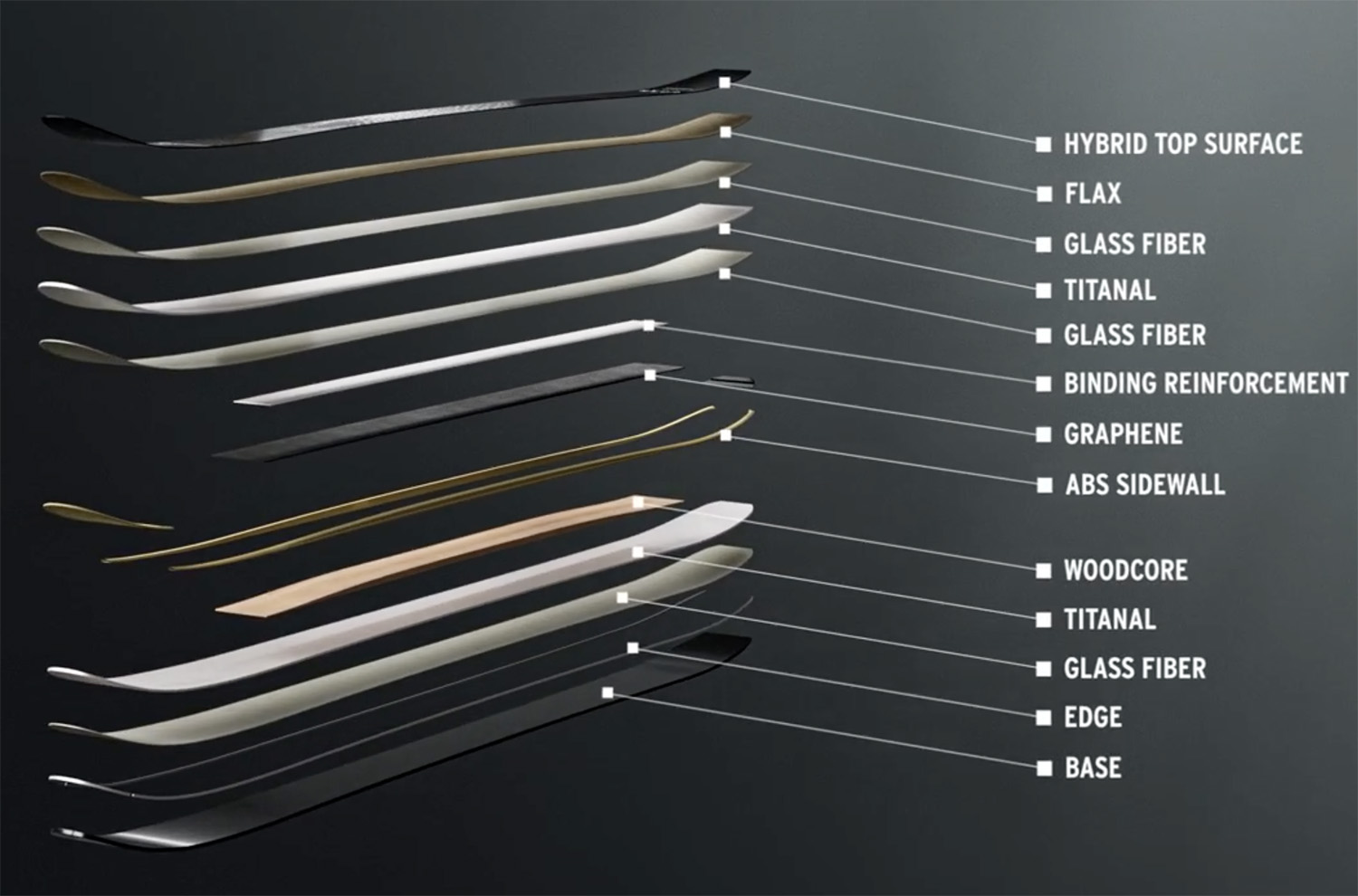
Comparing the Kore Ti and Kore Ti W skis, the main construction difference is that the Kore Ti (black top sheet) skis use a karuba and beech core, instead of poplar and PET. Head says that this difference makes the Kore Ti W (white top sheet) skis a bit more maneuverable and forgiving, while the Kore Ti skis are a bit more precise and powerful on edge.
Shape & Rocker Profile
The Kore 87 Ti W’s shape and rocker profile aren’t anything wildly out of the ordinary for a ~90mm-wide all-mountain ski. This ski has a bit of early tapering at the tips and tails and a modest amount of tip and tail rocker (with camber through the rest of the ski). Compared to the previous Kore 85 W that it effectively replaces, the Kore 87 Ti W’s shape and rocker profile look pretty similar overall.
Flex Pattern
Here’s how we’d characterize the flex pattern of the Kore 87 Ti W:
Tips: 6-6.5
Shovels: 6.5-8
In Front of Toe Piece: 8.5-10
Underfoot: 10
Behind the Heel Piece: 10-9
Tails: 8.5-7
This is one of many big differences between the 25/26 Kore Ti skis and previous Kore models. The new “Ti” skis feature notably softer tips and tails. Now, that’s not to say that the Kore 87 Ti W is a super soft ski — it’s still quite strong throughout. But the previous Kore skis always stood out for how consistently stiff they felt from tip to tail; the Kore Ti skis are more accessible / flexible at their extremities.
Sidecut Radius
Head says the 170 cm Kore 87 Ti W has a sidecut radius of 14.6 meters, which is slightly on the tighter / shorter end of the spectrum for its class.
Mount Point
The Kore 87 Ti W’s recommended mount point is about -9 cm from the true center of the ski. That’s a pretty set-back, directional mount point and isn’t far off from the recommended mount point of the previous Kore 85 W.
Aside from their different core materials, the other main difference between the Kore Ti and Kore Ti W skis is that the “W” skis feature recommended mount points that are about 1 cm closer to center, which Head says they did in order to “match women’s centre of gravity.”
Weight (and Comparisons)
Another significant change — the Kore Ti skis are generally heavier than their predecessors.
At about 1670 grams per ski for the 170 cm length, the Kore 87 Ti W isn’t a particularly heavy ski for its class, but it is about 150 grams heavier per ski than our pair of the ski it replaces, the 170 cm Kore 85 W.
Now, as with almost any category of gear, weight has its pros and cons. The previous, notably lightweight Kore skis always stood out for how nimble they felt, but they also stood out for not feeling as smooth, damp, and composed in rough snow conditions relative to comparable skis that weighed significantly more. As we’re about to discuss, the Kore Ti skis represent a significant improvement in that latter regard.
For reference, below are some of our measured weights (per ski in grams) for some notable skis. As always, keep in mind the length and width differences to try to keep things more apples-to-apples.
1393 & 1419 Ferreol Explo 86, 174 cm
1496 & 1509 Head Kore 85 W, 170 cm
1563 & 1577 Dynastar M-Pro 92 W, 162 cm
1572 & 1575 Head Kore 91 W, 170 cm
1578 & 1583 Head Kore 103 W, 170 cm
1627 & 1653 Head Kore 97 W, 170 cm
1638 & 1639 Atomic Maven 93 C, 172 cm
1664 & 1671 Head Kore 87 Ti W, 170 cm
1686 & 1719 Kore 93 Ti W, 170 cm
1690 & 1700 Blizzard Black Pearl 84, 170 cm
1697 & 1742 Salomon Stance 88 W, 174 cm
1711 & 1712 Majesty Havoc 90 Ti, 178 cm
1721 & 1734 Volkl Mantra 84 W, 170 cm
1744 & 1921 Atomic Maven 103 CTi, 178 cm
1745 & 1734 Salomon Stance 94 W, 168 cm
1760 & 1771 Shaggy's Belle 90, 174 cm
1762 & 1779 K2 Mindbender 89Ti W, 170 cm
1762 & 1781 Dynastar M-Pro 92 W, 178cm
1764 & 1794 Fischer Ranger 90, 170 cm
1773 & 1785 Blizzard Black Pearl 88, 170 cm
1822 & 1843 Armada Reliance 92 Ti, 172 cm
2045 & 2070 Nordica Santa Ana 92, 179 cm
For the 2024-2025 season, we’ve partnered with Carv to use their Carv 2 sensors and digital ski coach app to not only learn more about our own skiing technique, but also add more useful info to our ski reviews. Here, you’ll see us reference some of the data that the Carv 2 sensors record and analyze while we’re skiing. Check out our announcement to learn more about how Carv works, why we’re excited to use it as a tool for our reviews, and how to get a discount on your own Carv setup.
FULL REVIEW
Groomer / On-Piste Performance
Kristin Sinnott (5’8”, 135 lbs / 173 cm, 61 kg): The Kore 87 Ti W is technically part of Head’s “freeride” collection, but given its narrow waist width, I expected it to perform fairly well on groomers. And it does.
In the category of all-mountain skis that are roughly 85-90 mm wide underfoot, I wouldn’t call the Kore 87 Ti best in class when it comes to overall on-piste performance, but it’s generally predictable and intuitive.
I find it easy to initiate carved turns on this ski, whether with just a little pressure on the shovels or a roll of the ankle. I can confidently lay down fairly hard carves on groomers that are easily edge-able (e.g., fresh corduroy), but when conditions are very firm and/or scraped-off, I find myself sliding turns more than carving them.
When looking at my Carv data, I tended to log lower edge angles (roughly 30-40°) on the Kore 87 Ti than some comparable skis, such as the Volkl Mantra 84 W (roughly 40-50°), particularly on steep and/or firm slopes. On lower-angle groomers and/or softer snow, the Kore 87 Ti W carved nicely and felt secure on edge throughout the turn. In these more forgiving conditions, the transitions from turn to turn also felt extremely smooth.
The Kore 87 Ti W doesn’t produce a ton of rebound / energy at the end of the turn, which could be a pro or a con, depending on your particular preferences. Unlike some stiffer, more precise skis, and more energetic skis — most notably the Santa Ana series — I didn’t feel like I had to fight to stay in a forward stance at the end of each turn when carving the Kore 87 Ti W. Rather, this ski’s lack of a significant, distinct rebound helped me maintain my body position throughout the turn. When I did push the ski more aggressively, the Kore 87 Ti W rewarded me with some (predictable / moderate) energy / pop, but I’d place it on the less lively end of the spectrum when it comes to on-piste carving.
Overall, the Kore 87 Ti W is fairly forgiving as far as body position goes. It doesn’t require an aggressive, forward stance, nor do you need to ski it in a particularly centered / upright position. The Kore 87 Ti W also accommodates both small- and fairly large-radius turns (my Carv data lists average turn radii of anywhere from 6 to 15 meters). The steeper the terrain or the more I was pushing them, the more I tended to make smaller turns, but the Kore 87 Ti W didn’t feel particularly skittish when making bigger, lower-edge-angle turns (especially in more forgiving / consistent snow).
Moguls, Trees, & Tight Terrain
Moguls come in all shapes, sizes, and snow types, and while the Kore 87 Ti W worked well in some of them, others left me searching for an exit route.
In soft or chalky moguls that were nicely spaced out, I was able to skid or casually carve the Kore 87 Ti W between the bumps without feeling like I needed to be on my A-game. I also found it easy to shut down or shed speed as needed.
The Kore 87 Ti W’s lack of (or subtle) rebound, combined with its fairly accessible flex pattern, meant that I was able to keep myself out of the backseat for the most part. If I did end up leaning on its tails, typically due to an errant bump or just poor technique on my part, the Kore 87 Ti W usually made it easy to recover.
Similar to my experiences on piste, the Kore 87 Ti W didn’t quickly punish me for being slightly off balance if the snow was somewhat soft and/or the moguls weren’t super tight. Compared to some stiffer and more precise skis (e.g., Nordica Santa Ana 88, Volkl Mantra 84 W), the Kore 87 Ti W seemed to favor a slightly more upright, centered stance and didn’t demand as much pressure on the front of the ski to get its tails to release into skidded / pivoted turns.
The Kore 87 Ti W also has a low swing weight, so it doesn’t take much physical effort to turn. As a result, I frequently found myself popping off small bumps and generally having fun in soft snow conditions. Despite being a bit heavier than its predecessors, I’d still call the Kore 87 Ti W pretty agile for its class. And, while the older, lighter Kores had lower swing weights, the Kore 87 Ti W feels a bit easier overall in tight terrain — its flex pattern is more forgiving and its tails are a bit easier to release and skid around.
However, the firmer, bigger, and tighter the moguls, the more I found myself getting bucked around on the Kore 87 Ti W. While this ski is pretty accessible in less challenging mogul lines and snow conditions, its tails will occasionally hook up in firm snow, especially if you try to ski with a very centered stance or hang out on the backseat for multiple turns in a row. This can make it challenging to shed speed when navigating the troughs of really big, tight bumps that are also quite firm. In these instances, the Kore 87 Ti W has a stronger preference for a forward stance where you pressure the shovels and more deliberately unweight its tails.
Within the class of similarly narrow directional all-mountain skis, the Kore 87 Ti W still falls on the more maneuverable, agile, and forgiving side of the spectrum, particularly in average-sized bump lines, tree runs, etc. Despite its lack of much tail rocker or tail taper, I usually found it easy to pivot the skis more bases-flat, rather than having to be very deliberate about keeping it on edge and unweighting the tails (I often have to take the latter approach on stiffer, more precise skis like the Nordica Santa Ana 92 and Volkl Mantra 84 W).
So, overall, I’d call the Kore 87 Ti W a pretty solid off-piste option for its class, especially if you don’t encounter a ton of giant moguls with tight troughs and firm snow. Some skis around this width seem very biased toward on-piste precision and can be a handful as soon as you take them away from a groomed slope — that’s not the case with the Kore 87 Ti W.
But if you do frequently find yourself in big, tight, firm mogul lines, know that the Kore 87 Ti W will prefer a more precise approach and forward stance (i.e., it isn’t a super soft and surfy freestyle ski that’s easy to turn regardless of your body position / technique).
Powder, Soft Chop, & Slush
Given its narrow silhouette, the Kore 87 Ti W is far from my first choice for powder days, but its fairly wide (127 mm) and subtly rockered tips do provide a little bit of flotation. I skied the Kore 87 Ti W in about 6 in / 15 cm of light powder, and it generally worked well, relative to similarly narrow alternatives.
In fresh snow that’s light and/or shallow enough that I can still feel the firm base underneath, the Kore 87 Ti W cuts through the fresh snow predictably without throwing me off balance or randomly hooking up across the fall line.
It’s a similar story in other soft conditions like slush and soft chop — i.e., as long as the snow isn’t deeper than a few inches, the Kore 87 Ti W generally does fine. But the deeper and/or denser the snow, the more this ski’s tips tend to get pushed around and/or dive under the snow (in those instances, the wider Kore 99 Ti W offers notably better flotation, maneuverability, and stability).
Firm Chop & Crud
The Kore 87 Ti W is not the first ski I would grab for firm chop or crud. It offers significantly better suspension / a smoother ride quality than the lighter, previous-generation Kore skis, but it’s still a fairly light ski relative to its closest competitors. Trying to make fairly big, fast turns on the Kore 87 Ti W in firm snow that’s also cruddy / bumpy / inconsistent can lead to a fair bit of deflection, particularly at the tips of this ski. Given that, I usually had to dial back my speed and ski more conservatively in these conditions. But even when skiing cruddy snow at slower speeds, the Kore 87 Ti W feels significantly nicer and less chattery than the previous Kore 85 W.
Who’s It For?
Overall, the Kore 87 Ti W makes the most sense for skiers seeking a true all-mountain option that’s also fairly narrow underfoot.
On groomers and in moderately tight off-piste terrain, the Kore 87 Ti W doesn’t require much speed or a perfect, forward skiing stance to feel intuitive. It’s not the best option in its class if you want to carve really high-edge-angle turns on very firm slopes, but it’s still fun to carve on most groomers and is more maneuverable and forgiving than many similarly narrow skis once you take it off piste. All of this makes it a viable option for Intermediate and even some Beginner skiers.
At the same time, Advanced and Expert skiers could also get along well with the Kore 87 Ti W, particularly if you’re looking for a more agile and maneuverable option that’s still directional. For example, the Kore 87 Ti W offers a more damp and stable ride than, say, the super-agile Elan Ripstick 94 and DPS Wailer 90, but the Kore 87 Ti W is more maneuverable and forgiving than many of the stiffer and more precise options in its class (e.g., Nordica Santa Ana 88, K2 Mindbender 89Ti W).
Bottom Line
With the Kore 87 Ti W, Head has done an impressive job of maintaining much of the previous-generation Kore skis’ agile and maneuverable rides while also making the ski more damp and predictable in variable snow conditions. The Kore 87 Ti W doesn’t offer best-in-class edge hold or high-speed stability, but especially compared to other skis around the same width, the Kore 87 Ti W is a very well-rounded all-mountain option.
Our Deep Dives, Winter Buyer’s Guide, & Flash Reviews
BLISTER+ members and those who purchase our Digital Access Pass can check out the Deep Dive comparisons linked below, where we compare a given ski, bike, etc. to a whole bunch of other comparable products in its class. Don’t have access? Get our Digital Access Pass to read all of our Deep Dive comparisons, as well as our Flash Reviews, where we provide our initial impressions as soon as we start testing gear.
Or, even better, become a BLISTER+ member to get that + the best worldwide Outdoor Injury Insurance, exclusive deals and discounts on skis, personalized gear recommendations from us, access to our annual Winter Buyer’s Guide, and much more.
On that note, you can also get our thoughts on this ski and 300+ others in our 2024-2025 Blister Winter Buyer’s Guide. BLISTER+ members already have access, or you can purchase the guide on its own to get the the print copy + digital version at no extra cost, or the digital-only edition.
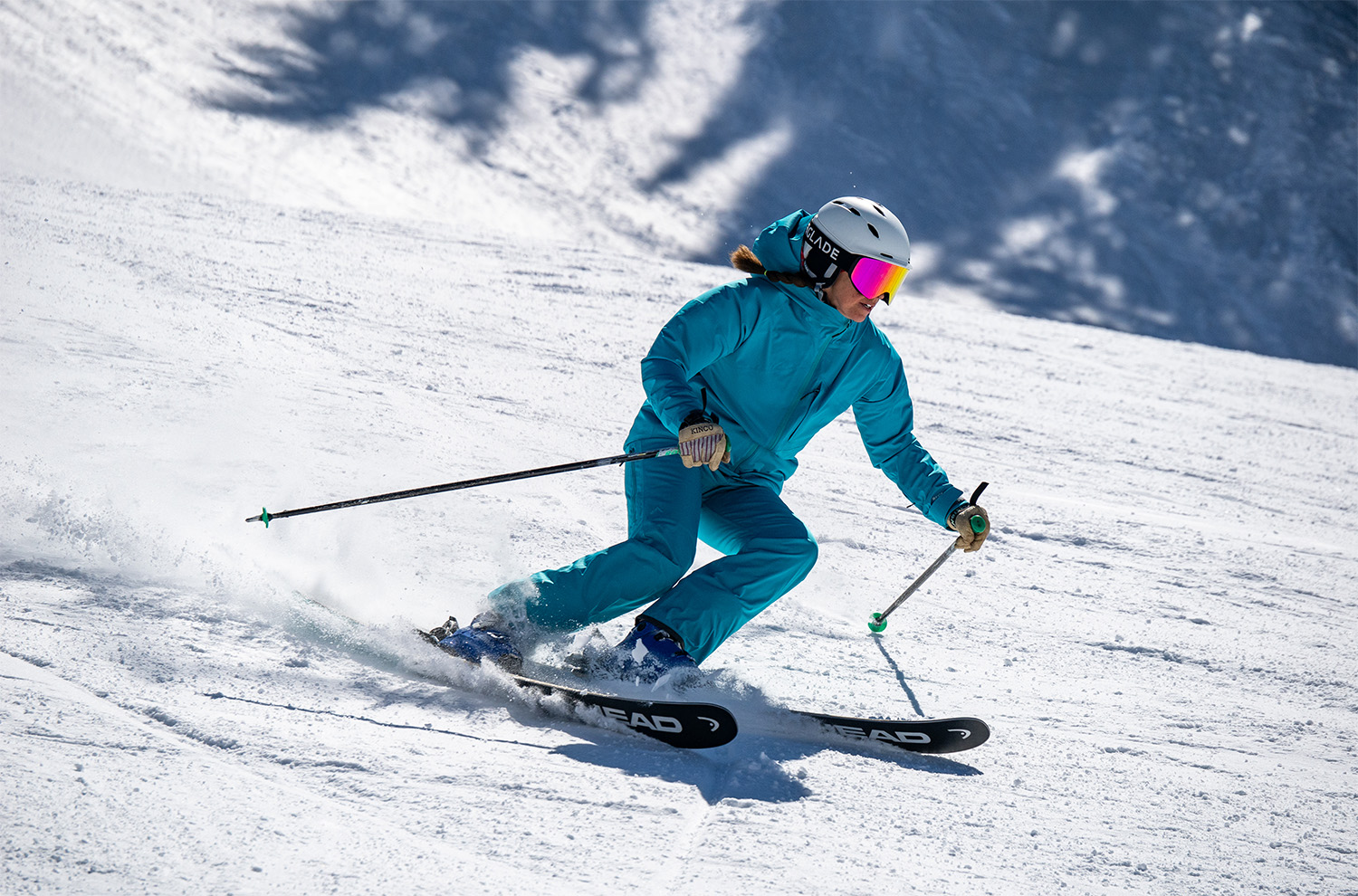
Deep Dive: Head Kore 87 Ti W
We compare the Kore 87 Ti W to the previous Kore 85 W, new Kore 93 Ti, Blizzard Black Pearl 88, Nordica Santa Ana 88, Salomon Stance 88 W, Elan Ripstick 94 W, DPS Wailer 90, Nordica Santa Ana 92, K2 Mindbender 89Ti W, Volkl Mantra 84 W, Majesty Havoc 90 Ti, & Salomon QST Lux 92.
Blister’s Flash Reviews and Deep Dives are accessible to those who purchase one of our paid subscriptions
To get our comprehensive Deep Dives and our initial, unfiltered reports on new gear, become a member and receive many other services, deals, and discounts.
If you’re already an active member, please log in.
(If you’re already logged in and a member in good standing and seeing this message in error, please refresh this page in your browser.)
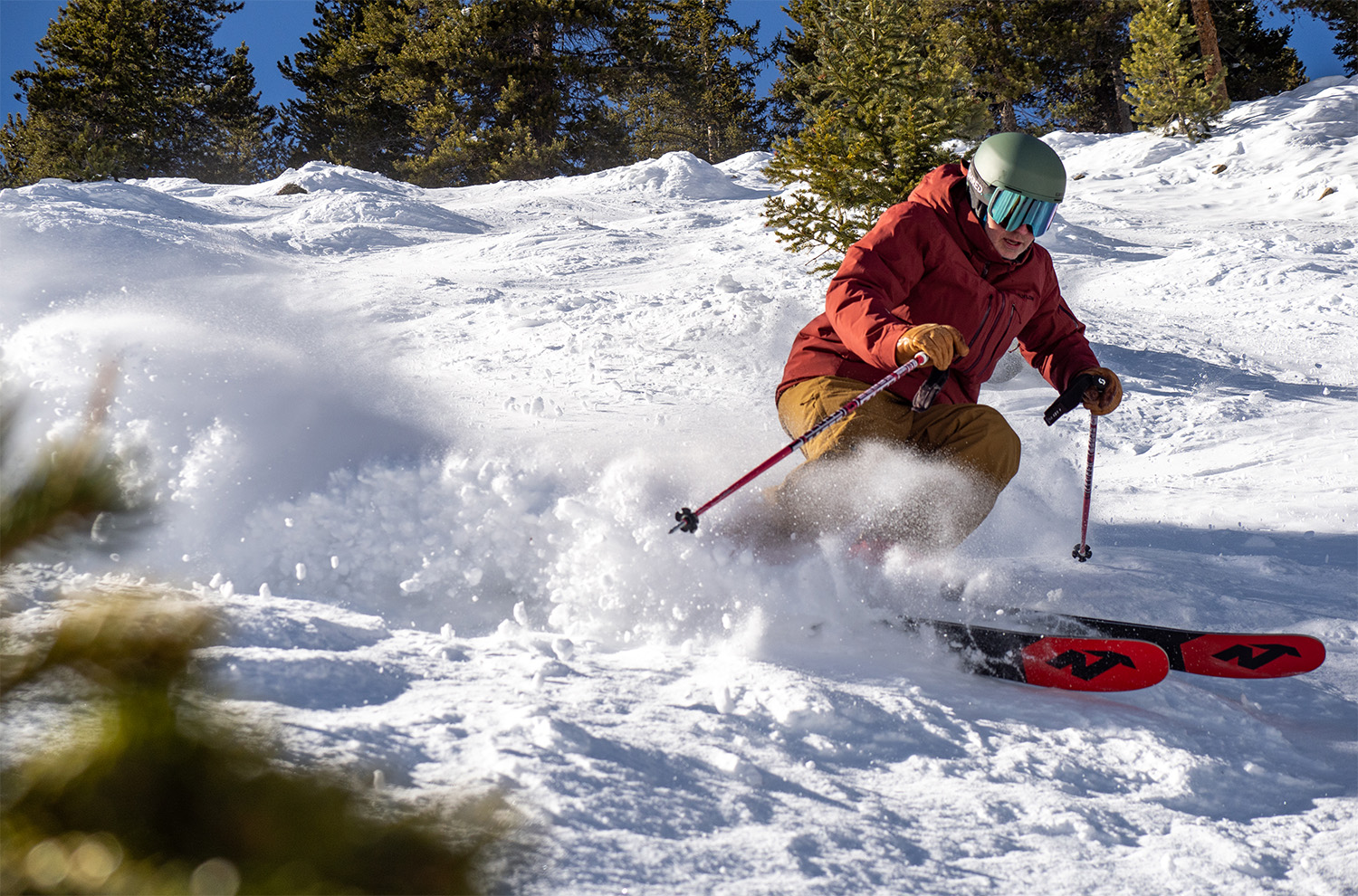
Reviewer Reports: New Head Kores, Ski Boots, & One Age-Old Question (Ep.333)
Luke, Kara, & Jonathan discuss Head’s overhauled collection of Kore skis; Jonathan makes a confession after he took some carving skis off piste; Kara and Luke discuss a bunch of boots they’ve been testing; Jonathan poses an age-old question about boot flexes; Kara breaks down the setups she’s bringing to Japan; and much more.
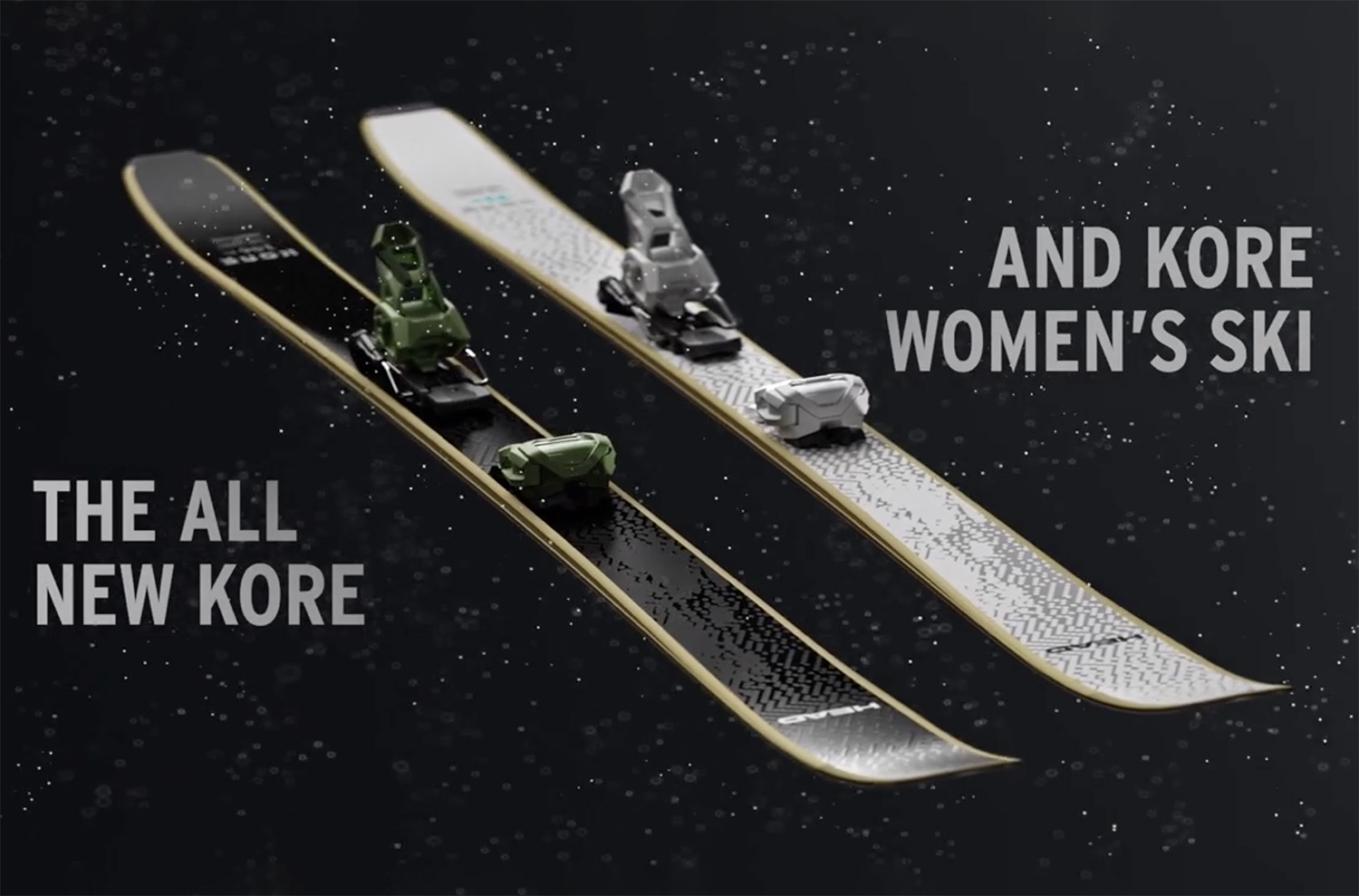
Head Overhauls Kore Skis for 25/26 + Launches Dual-BOA Kaliber Boots
Head is making big changes to their lineup for 25/26, including a complete overhaul of their longstanding Kore skis, the new dual-BOA Kaliber boot collection, and more. Here are all the details.



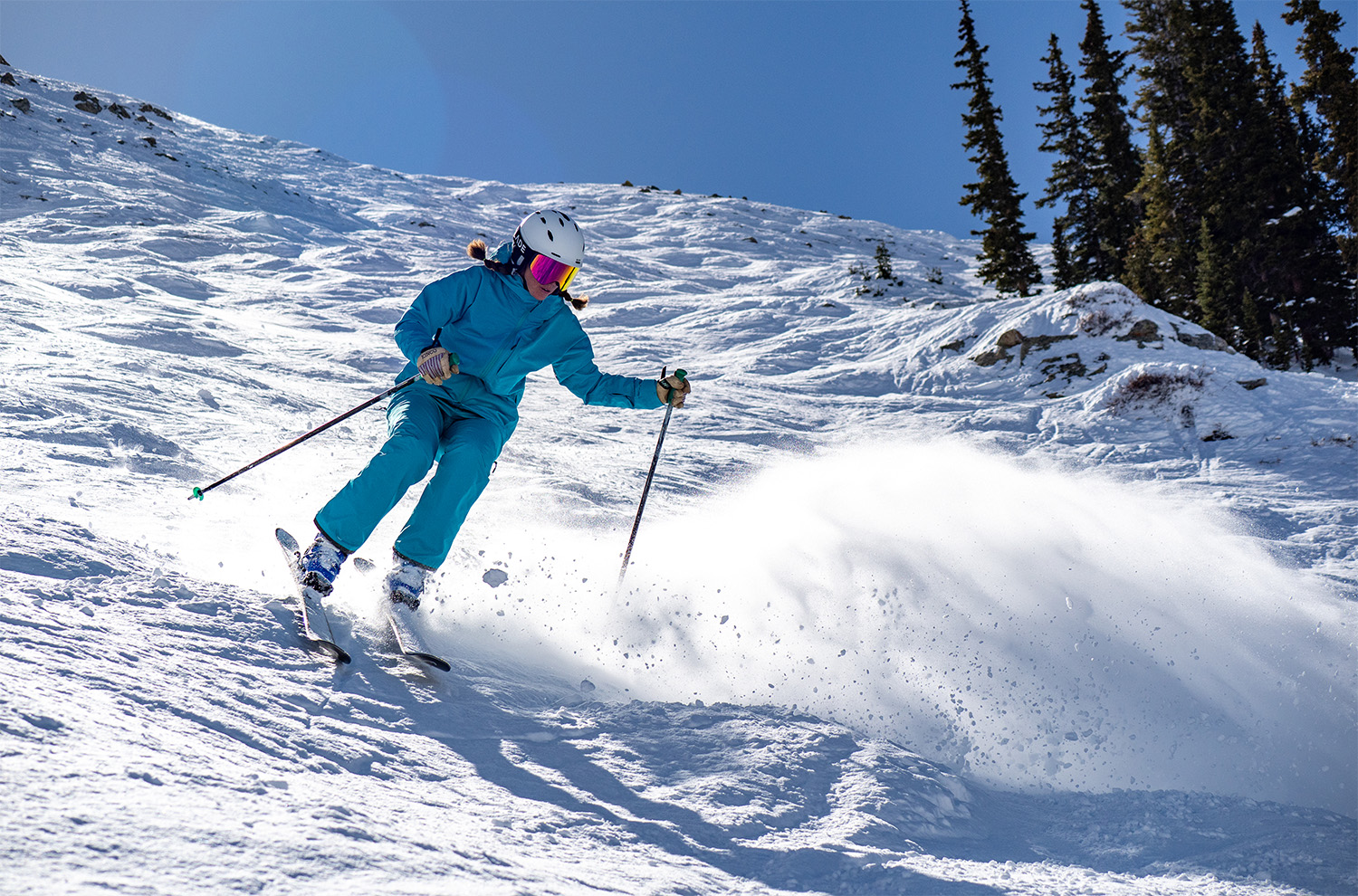
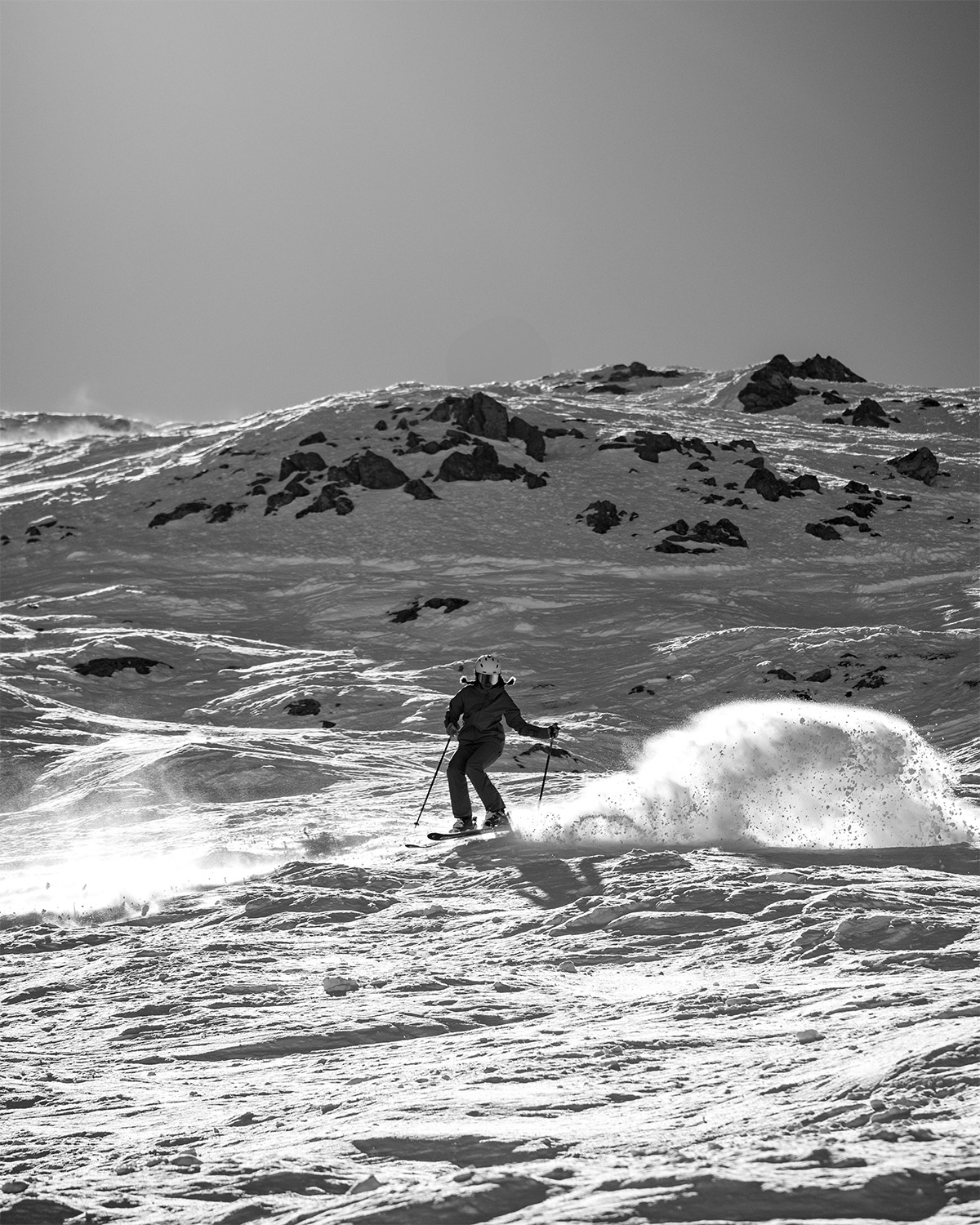
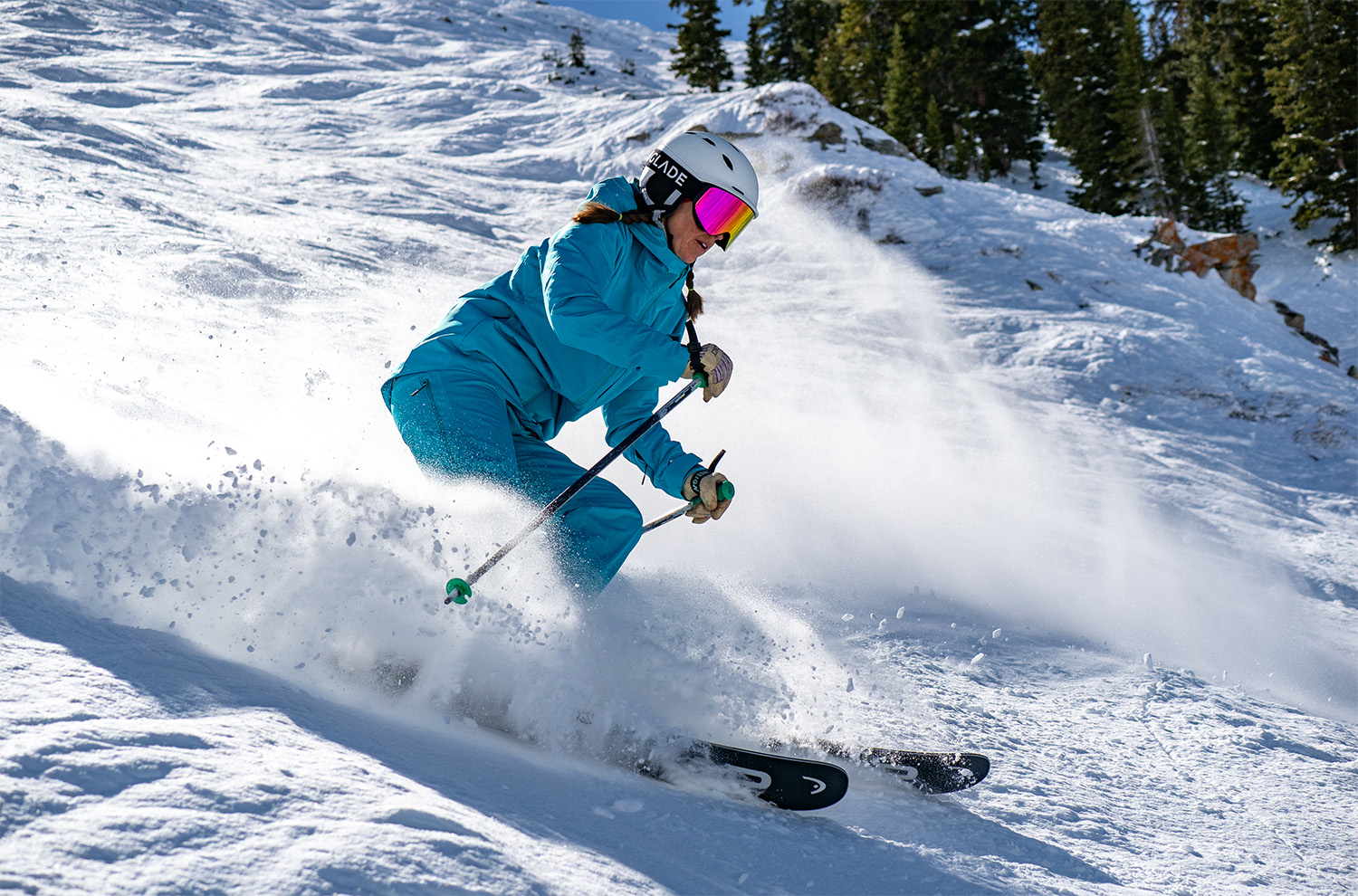

Très souple et efficace dans la neige granuleuse entre autres. Beau cosmétique aussi pour ce Kore.
I really enjoyed this ski at the summit! It’s easy to ski and tolerates a variety of stances. It did feel a bit soft trying to carve hard on icy groomers but that was the only time I wished for “more ski”. Otherwise I found the maneuverability and light weight of this ski super fun to bounce around the mountain on. I really wanted to try the black version but my size was always out. Any chance you’ll add a comparison between the white and black versions to the deep dive?